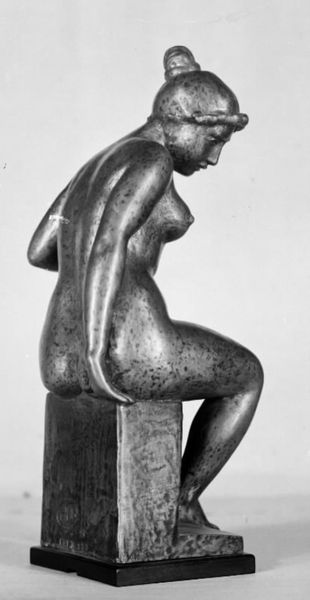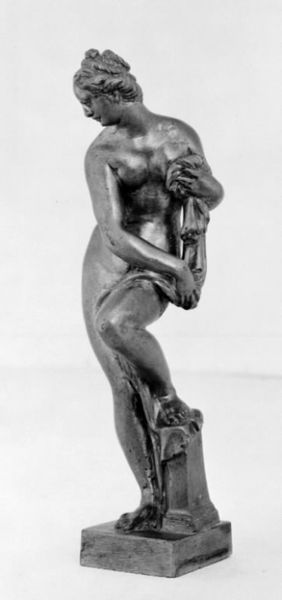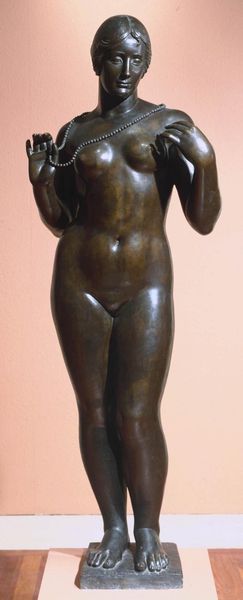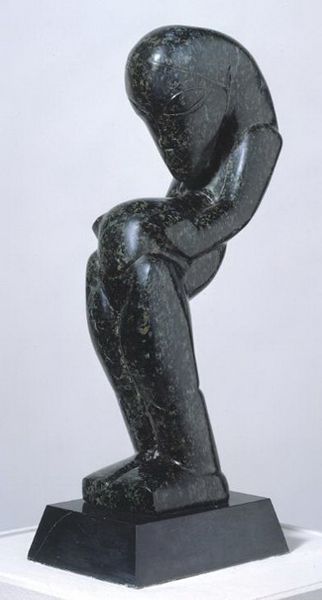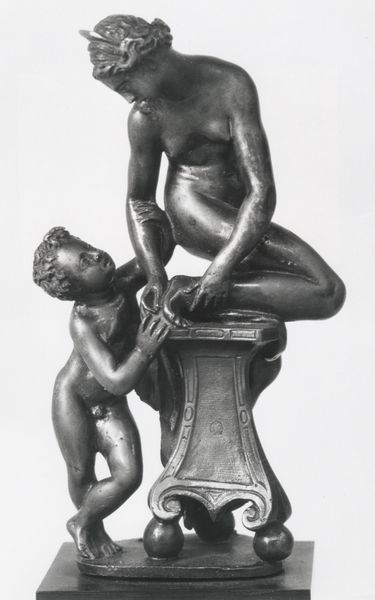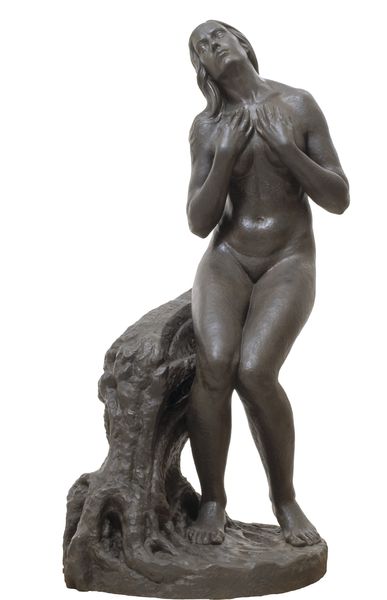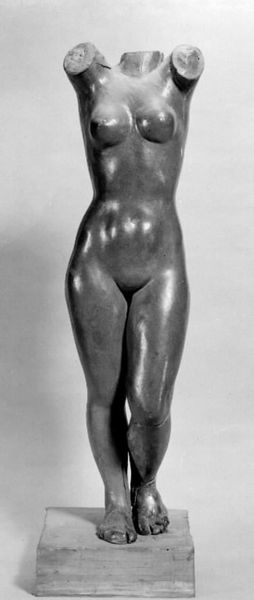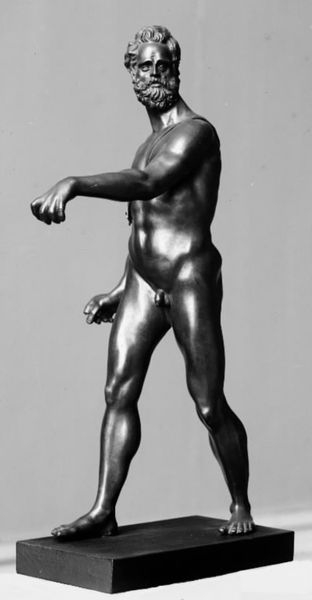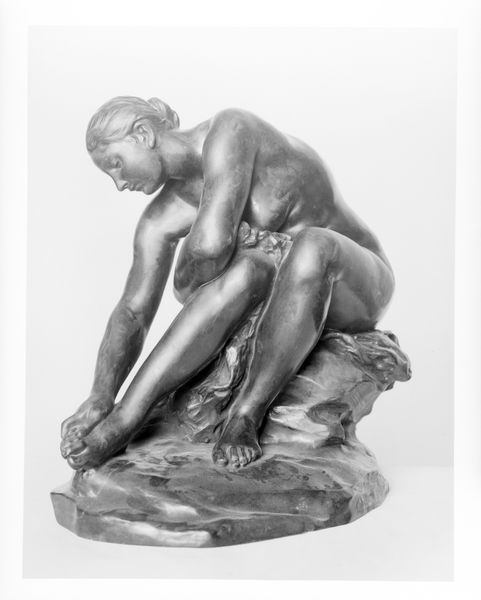
bronze, sculpture
#
website interface
#
portrait image
#
sculpture
#
bronze
#
frontview face
#
sculptural image
#
male portrait
#
unrealistic statue
#
portrait head and shoulder
#
ui concept
#
sculpture
#
france
#
statue
Dimensions: 11 1/2 x 5 3/8 x 5 1/4 in. (29.2 x 13.7 x 13.3 cm)
Copyright: No Copyright - United States
Editor: This is Aristide Maillol's "Leda," created around 1902. It’s a bronze sculpture, and it feels both classical and quite earthy. What stands out to me is how grounded the figure seems, despite the mythological subject matter. What can you tell me about it? Curator: Looking at Maillol's "Leda" through a materialist lens, I see a deliberate engagement with the historical modes of bronze casting, but with a modern sensibility. Think about the labor involved in its creation, from the initial clay model to the molten bronze poured into a mold. Consider also the economic structures at play; who had access to bronze, to studios, to patronage? The polished surface almost hides that history of labor, doesn’t it? Editor: It does. It makes me think about how much work goes into these bronzes before they become something “beautiful.” Did Maillol choose bronze specifically to engage with these ideas? Curator: Possibly. Bronze, traditionally associated with heroic sculptures and authority, is here used to depict a mythological subject, but without the usual idealized grandiosity. She isn't a goddess floating in the clouds. This "Leda" feels very present, almost weighted down. The very materiality of the bronze connects the sculpture to foundries, to industrial processes, and a specific social context. The questions become, what does it mean to translate this classical subject to that particular material, using those processes? Editor: That's fascinating! I hadn't considered the social and economic implications of the bronze itself. Curator: Exactly! The act of creating the sculpture is as critical to understanding its meaning as the subject is. Editor: This really changes how I view sculpture! Seeing it in terms of material production makes the artwork so much richer. Curator: Indeed. Analyzing the production processes encourages us to view all art from a socioeconomic perspective and with questions concerning the cultural moment.
Comments
No comments
Be the first to comment and join the conversation on the ultimate creative platform.
